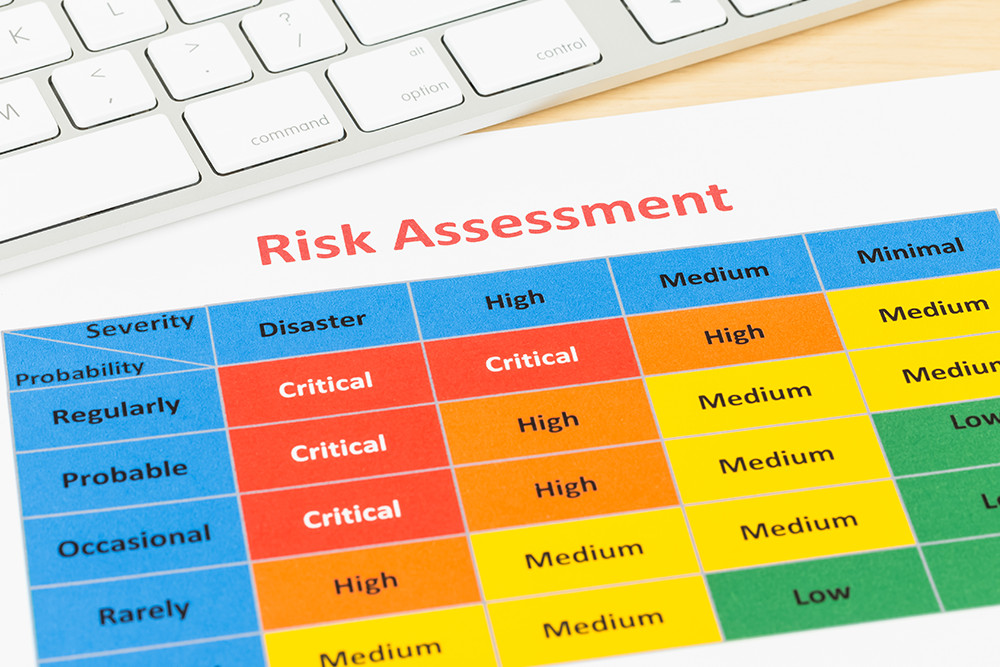Risk assessment is a fundamental process in both personal and professional contexts, helping individuals and organizations identify, evaluate, and mitigate potential risks that could impact their objectives. By systematically analyzing risks and their potential consequences, individuals and organizations can make informed decisions, allocate resources effectively, and safeguard against uncertainty. In this comprehensive guide, we’ll explore the principles of risk assessment, its key components, and its significance in various domains.
Understanding Risk Assessment
Risk assessment is the process of identifying, analyzing, and evaluating potential risks and uncertainties that could affect the achievement of objectives. It involves assessing the likelihood and impact of various risks, determining their significance, and developing strategies to manage or mitigate them. Risk assessment is a proactive approach to risk management, providing a framework for making informed decisions and taking appropriate actions to minimize potential harm or loss.
Key Components of Risk Assessment
1. Risk Identification
The first step in risk assessment is identifying potential risks and hazards that could impact objectives. This involves brainstorming, gathering information, and conducting risk assessments to identify known and unknown risks that could arise from internal or external factors.
2. Risk Analysis
Once risks have been identified, they are analyzed to assess their likelihood and potential impact. This involves evaluating the probability of occurrence, the severity of consequences, and the overall risk exposure associated with each identified risk.
3. Risk Evaluation
After analyzing risks, they are evaluated to determine their significance and priority for further action. Risks are typically categorized based on their severity, likelihood, and potential impact on objectives, allowing organizations to focus their resources on addressing high-priority risks.
4. Risk Mitigation
Finally, risk mitigation strategies are developed and implemented to manage or reduce the impact of identified risks. This may involve taking preventive measures to minimize the likelihood of occurrence, implementing controls to mitigate the consequences of risks, transferring risks through insurance or contractual agreements, or accepting certain risks as unavoidable.
Significance of Risk Assessment
1. Decision Making
Risk assessment provides decision-makers with valuable insights into potential risks and uncertainties, allowing them to make informed decisions based on an understanding of the potential consequences and trade-offs involved.
2. Resource Allocation
By identifying and prioritizing risks, organizations can allocate resources more effectively, focusing their efforts on addressing high-priority risks that pose the greatest threat to their objectives.
3. Compliance and Regulation
Risk assessment is often required by regulatory agencies and industry standards to ensure compliance with legal and regulatory requirements. Organizations may be required to conduct risk assessments to identify and mitigate potential hazards in their operations.
4. Business Continuity
Risk assessment is essential for ensuring business continuity and resilience in the face of unexpected events or disruptions. By identifying potential risks and developing contingency plans, organizations can minimize the impact of adverse events and maintain operations during times of crisis.
Best Practices for Risk Assessment
1. Engage Stakeholders
Involve key stakeholders, including employees, managers, and subject matter experts, in the risk assessment process to gain diverse perspectives and insights into potential risks.
2. Use a Structured Approach
Follow a structured risk assessment methodology or framework, such as the ISO 31000 or COSO ERM frameworks, to ensure consistency and thoroughness in the risk assessment process.
3. Consider Multiple Perspectives
Take into account both quantitative and qualitative factors when assessing risks, including financial impact, reputational risk, legal implications, and stakeholder concerns.
4. Regularly Review and Update
Risk assessment is an ongoing process that should be reviewed and updated regularly to reflect changes in the business environment, emerging risks, and lessons learned from past experiences.
Conclusion
In conclusion, risk assessment is a critical component of effective risk management, providing individuals and organizations with the tools and insights they need to navigate uncertainty and make informed decisions. By systematically identifying, analyzing, and evaluating potential risks, organizations can proactively mitigate threats, capitalize on opportunities, and achieve their objectives with confidence.





